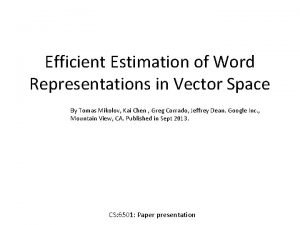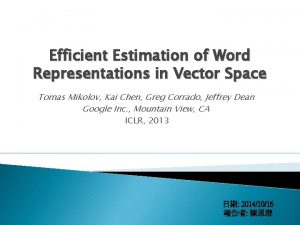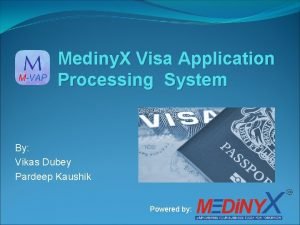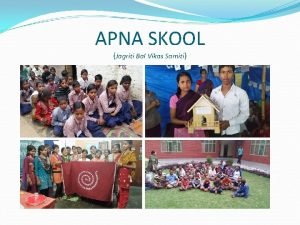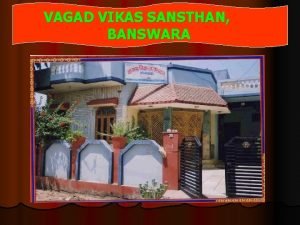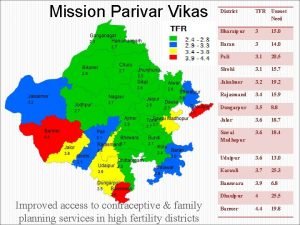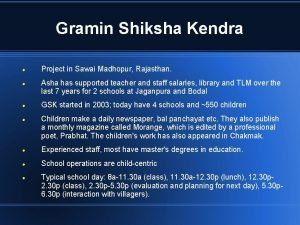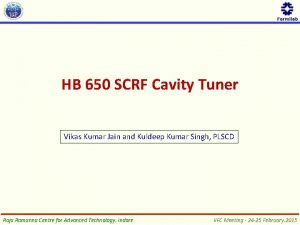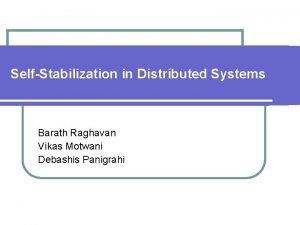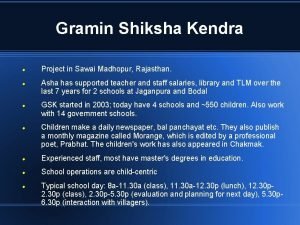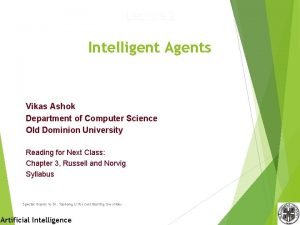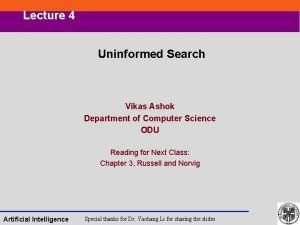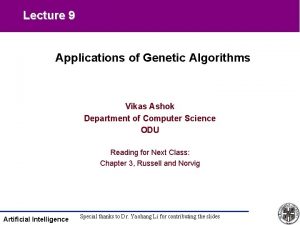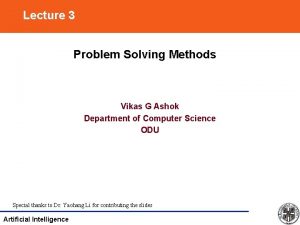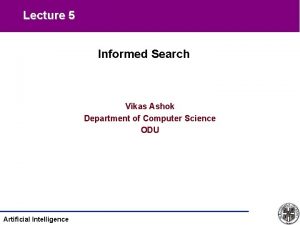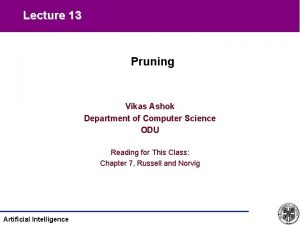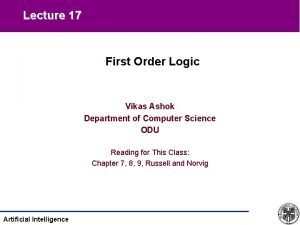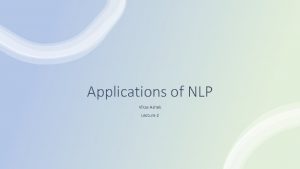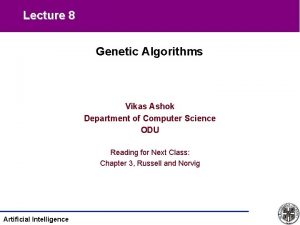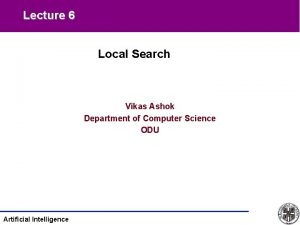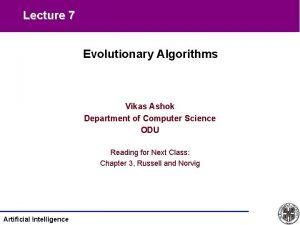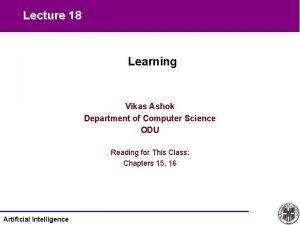Lecture 6 Vikas Ashok Word Representations Why Represent




![Distributional Semantics • [Firth 1957]: Word meaning by the company it keeps. • A Distributional Semantics • [Firth 1957]: Word meaning by the company it keeps. • A](https://slidetodoc.com/presentation_image_h2/5519d3d68c27c5f34c573127c6ebc5cc/image-5.jpg)

![Examples • vector[Queen] = vector[King] - vector[Man] + vector[Woman] From Girish K’s slides Examples • vector[Queen] = vector[King] - vector[Man] + vector[Woman] From Girish K’s slides](https://slidetodoc.com/presentation_image_h2/5519d3d68c27c5f34c573127c6ebc5cc/image-7.jpg)













- Slides: 20

Lecture 6 Vikas Ashok

Word Representations – Why? • Represent the meaning • What is meaning? • For us, meanings are grounded in the experiential or communicative context • For NLP? • How is the word used? • Context! • Same word can have different meanings • Different words can have the same meaning

• How the word gets used? • In what contexts is the word typically used? • What roles does the word play in those contexts? Word Representation - Properties • Similar contexts => similar representations. • Function (word) -> k dimensional vector. • The components of the vector hopefully capture the main semantics of words. • Aspects of meaning.

One-Hot Encoding • Not a good solution – why? • Vectors are huge for huge vocabularies • All words equidistant – similar and dissimilar words
![Distributional Semantics Firth 1957 Word meaning by the company it keeps A Distributional Semantics • [Firth 1957]: Word meaning by the company it keeps. • A](https://slidetodoc.com/presentation_image_h2/5519d3d68c27c5f34c573127c6ebc5cc/image-5.jpg)
Distributional Semantics • [Firth 1957]: Word meaning by the company it keeps. • A word’s meaning can be determined by the contexts in which it appears. • That is, we can represent a word by its context. • But contexts are words too!

Simple Example • Cats love food. • Cats love dogs. • Dogs love tails. • Problems? • Large vectors • Frequent words
![Examples vectorQueen vectorKing vectorMan vectorWoman From Girish Ks slides Examples • vector[Queen] = vector[King] - vector[Man] + vector[Woman] From Girish K’s slides](https://slidetodoc.com/presentation_image_h2/5519d3d68c27c5f34c573127c6ebc5cc/image-7.jpg)
Examples • vector[Queen] = vector[King] - vector[Man] + vector[Woman] From Girish K’s slides

• Lets just skip the linear algebra and focus on the following: • Decomposition allows a way to re-represent the vectors • In this new representation dimensions are ordered by “importance” • We can thus use it to get a compressed/truncated representation. • Also vectors are dense! Not sparse like A. Singular Value Decomposition

• Uk – The row vectors truncated to the first k columns • Sometimes, Uk x �� k is also used. • Usually not much difference in practice. • You can project the vectors down to two-dimensions and visualize. • Words which tend to co-occur in similar contexts will get similar reps. Singular Value Decomposition

Singular Value Decomposition • High Complexity • High Maintenance • Alternative Option: Treat word representations as the learning target. • Learn representations that maximize some objective on a training set. • Three examples • Skip-grams Word 2 vec • Glo. Ve • Neural Language Models (Bengio)

Word 2 Vec

Word 2 vec – Continuous Bag of Words • E. g. “The cat sat on floor” • Window size = 2 12

From Dr. Richard Socher’s slides 13

From Dr. Richard Socher’s slides 14

15 www. cs. ucr. edu/~vagelis/classes/CS 242/slides/word 2 vec. pptx

www. cs. ucr. edu/~vagelis/classes/CS 242/slides/word 2 vec. pptx 16

www. cs. ucr. edu/~vagelis/classes/CS 242/slides/word 2 vec. pptx 17

www. cs. ucr. edu/~vagelis/classes/CS 242/slides/word 2 vec. pptx 18

www. cs. ucr. edu/~vagelis/classes/CS 242/slides/word 2 vec. pptx 19

Resources • Stanford CS 224 d: Deep Learning for NLP • http: //cs 224 d. stanford. edu/index. html • The best • “word 2 vec Parameter Learning Explained”, Xin Rong • https: //ronxin. github. io/wevi/ • Word 2 Vec Tutorial - The Skip-Gram Model • http: //mccormickml. com/2016/04/19/word 2 vec-tutorial-the-skip-gram-model/ • Improvements and pre-trained models for word 2 vec: • https: //nlp. stanford. edu/projects/glove/ • https: //fasttext. cc/ (by Facebook) 20
 Hey hey bye bye
Hey hey bye bye Does the table represent a function why or why not
Does the table represent a function why or why not What does the image represent
What does the image represent Efficient estimation of word representation in vector space
Efficient estimation of word representation in vector space Efficient estimation of word representations
Efficient estimation of word representations Dr vikas patel
Dr vikas patel Dr vikas patel
Dr vikas patel 138000/12
138000/12 Vagad vikas
Vagad vikas Mission parivar vikas ppt
Mission parivar vikas ppt Dhara vikas sikkim poster
Dhara vikas sikkim poster Sabki yojana sabka vikas
Sabki yojana sabka vikas Swarup vardhini
Swarup vardhini Gramin sarva shiksha vikas kendra
Gramin sarva shiksha vikas kendra Vikas kumar
Vikas kumar Vikas kumar
Vikas kumar Dr vikas bansal
Dr vikas bansal Dr vikas bhatia
Dr vikas bhatia Vikas motwani
Vikas motwani Gramin sarva shiksha vikas kendra
Gramin sarva shiksha vikas kendra Vikas lab thakur complex
Vikas lab thakur complex



